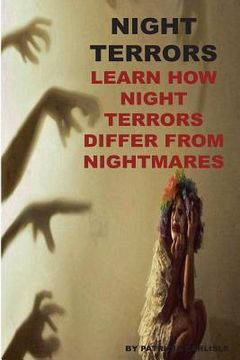Synopsis "Night Terrors: Learn How Night Terrors Differ From Nightmares"
I want to thank you and congratulate you for choosing the book, "NIGHT TERRORS: LEARN HOW NIGHT TERRORS DIFFER FROM NIGHTMARES". Dreams occur during the period of sleep called REM (Rapid Eye Movement), which is repeated three or four times a night. A nightmare is a dream that takes place during REM sleep. But this dream causes intense feelings of fear, invincibility, terror, distress or extreme anxiety. These feelings usually awake little babies dreaming nightmares, with total or partial remembrance of what they dreamed. A night terror is an episode of extreme fear during sleep, with no remembrance of the dream itself. The child awakes screaming and crying, without knowing what he dreamed, being unable to say what scared him so badly and having a state of horror that is likely to persist even after apparently awake. Unlike nightmares, night terrors occur during non-REM sleep (dreamless sleep.) Children wake up sweating, with a rapid pulse and frightened. They are not aware of what is around them and don't respond to attempts of calming them. The crisis may last from 10, 15 or 30 minutes. The good thing is that there are children who fall asleep immediately after the crisis ended. And most of the times children don't remember what scared them in their sleep. But in rare cases they remember some fragmentary picture of the "dream". It seems that many nightmares and night terrors occur more often in childhood. At child or at adult, these terrifying night-time experiences tend to occur in periods in which the individuals is uncertain, have emotional disorders, depression, feelings of guilt, the existence of unresolved psychological conflicts or traumatic events. These night terrors are occurring as a part of post-traumatic stress syndrome. There are a number of high emotional events that may disturb the children's sleep and may go unnoticed by their parents. Examples of these emotional events are: loss of a loved object or favorite toy, a fight with another child at play, an injustice that he/she did or someone has made to them. But the most emotional disrupt is hearing argues between parents. There are children who suffer from serious psychological problems, which are the source of these nightmares. Psychotherapy may be the solution of solving these problems, but it is extremely important to know the child's and their family history. Even though nightmares and night terrors are considered normal events, common in development, but not mandatory, most times, they disappear in adolescence. Yet, if the occurrence frequency of these phenomena is high, then it requires expert evaluation.

